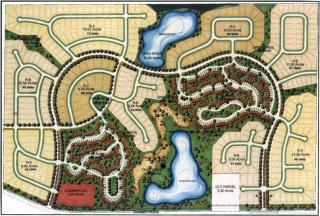Planned Development (PD) Submittal Information

According to the American Planning Association (APA), 2022, "more than 20 percent of all homes in the United States are built by the nation's top 10 builders." Planned Developments (PDs) and master-planned communities make up the largest share of new development in many suburban areas and infill development in urban centers.
A PD is a development project a municipality considers comprehensively at one time, usually in the zoning process employed to approve a development plan. A PD proposal will contain a map and the regulations under which the project will be built. PDs were at first primarily residential. They were a change in style from the standard residential developments common after the Second World War.
This change occurred because the standard subdivision ordinance and the accompanying zoning regulations have serious flaws when applied to residential land-use projects. Most conventional zoning ordinances do not allow single-family, multi-family, and nonresidential uses in the same zoning district. They also contain site development standards for setbacks, site coverage, and the like that produce dull projects because they apply uniformly throughout each district. Developers who had to comply with these zoning and subdivision regulations typically built residential projects with a sameness that led to the nickname "cookie-cutter" development.
The PD concept was a response to these failings in residential development. It was implemented by a new set of regulations oin the zoning ordinance that applied primarily to residential development and required a discretionary project review followed by the approval of a development plan that displaced zoning regulations in residential zones. PD was intended to provide a comprehensive development review that could overcome the shortcomings of zoning and subdivision regulation, improve project design, and provide for common open space. This form of PD is usually called "cluster" development.
The PD cluster development is attractive for developers because project costs usually are lower given that clustering reduced the lengths of streets and other linear facilities. PD regulations allow municipalities the discretion to decide what kind of development is approved. PD ordinances allow communities to use their discretion in deciding what developments they accept.
| Attachment | Size |
|---|---|
| 283.8 KB | |
| 255.85 KB | |
| 301.29 KB | |
| 314.4 KB | |
| 252.57 KB |

